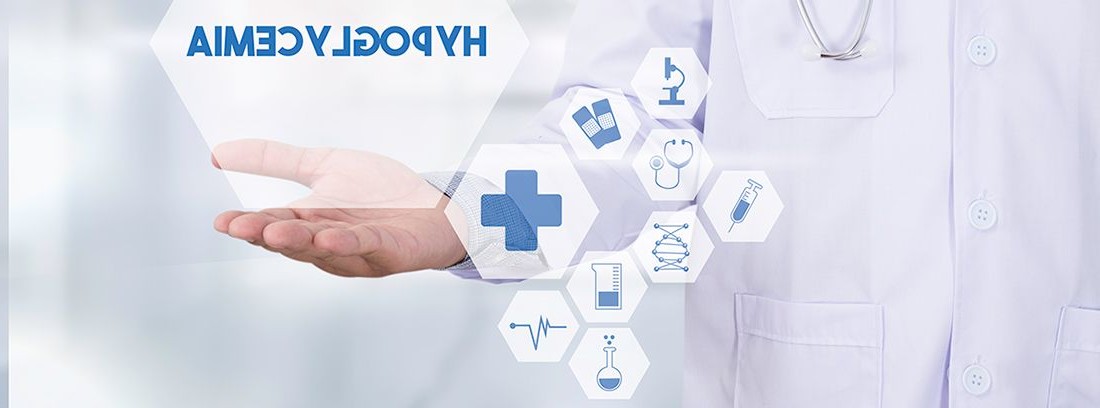Hypotension and Hypoglycemia

Hypotension and hypoglycemia are two entities, very different in their origin, their severity and their treatment, they produce symptoms that, although in some cases they may be similar, most of the time they are not and knowing how to differentiate them and, therefore, treat them, can be useful.
Low blood pressure- hypotension
The drop in blood pressure is defined as a sudden drop in blood pressure that is usually more than 20 mm Hg of systolic blood pressure (the maximum) or more than 10 mm Hg in the case of diastolic pressure (the maximum minimum). The drop in blood pressure can be of three types:
- orthostatic hypotension, which occurs when changing position abruptly, especially when standing up.
- Neurally mediated hypotension, which occurs occasionally in people who have been standing for a long time.
- Severe hypotension it is caused by severe medical conditions, mainly sudden and massive blood loss, and can lead to death.
Hypotension is not any specific disease, but the inability to regulate blood pressure quickly. When we stand up abruptly or stand for a long time, gravity and immobility make it difficult for the blood to pump to the heart, the blood rushing in the legs and causing a drop in blood pressure. The body responds normally by beating faster to compensate for this imbalance, but if the compensation reaction is slow or fails, hypotension occurs.
Symptoms
A picture of hypotension, unless it is caused by a hemorrhage, will be of short duration, of seconds to a minute or two and the person will present:
- Dizziness.
- Leg weakness
- Blurry vision.
- Fainting for a few seconds (vasovagal syncope).
- Paleness and cold sweating.
- Palpitations
People with low blood pressure per se may experience fainting, mild dizziness, vertigo, lightheadedness, or blurred vision when they get out of bed abruptly or stand up after prolonged sitting. Tiredness, alcohol consumption, or large meals can trigger these episodes.
What should be done in the presence of a person with hypotension?
First of all do not be alarmedWell, it is something that recovers in a few seconds or minutes. The ideal is:
- Lay the person on the ground with the head on the side.
- Raise the legs up (to promote the return of blood).
- Give him some space and air so he doesn't get overwhelmed.
- Stimulate by holding hands and talking to them.
Once recovered from hypotension, you should gradually incorporate the person and give him something to raise blood pressure. Coffee or caffeinated drinks are usually given, but this only makes a little nervous, but does not increase the tension. What raises the tension is the salt, therefore, it is best to give it some salty almonds, some olives or bread with oil and salt.
Low blood sugar-hypoglycemia
On the other hand, hypoglycemia or low blood sugar is defined as a decrease in venous blood glucose below 70 mg / dl. This drop in blood glucose will cause less sugar to reach the cells and changes will occur at the level of all the organs, especially at the brain level.
Hypoglycemia is much less common than hypotension, but it is potentially more serious, especially in patients, since without adequate glucose supply, cells rapidly begin to die. The main causes of a drop in blood glucose levels are:
• Prolonged fasting periods. • Delay in food intake. • Intense or prolonged exercise. • Excessive alcohol consumption. • Misuse of insulin or hypoglycemic agents in diabetic patients.
Hypoglycemia can go unnoticed and the person hardly feels hungry. The most common symptoms when hypoglycemia occurs are:
• Trembling and weakness. • Paleness. • Tachycardia. • Anxiety or irritability. • Sweating and salivation. • Tingling in the hands (paresthesias). • Neurological disorders (headache, slowness, difficulty speaking, blurred or double vision, drowsiness, lightheadedness). • In severe cases: seizures, sudden loss of consciousness, coma.
What to do before a person who has a probable low blood sugar with symptoms is:
• Ensure the level of consciousness. • If you are conscious, give fast-absorbing carbohydrates, namely a glass of orange juice, a glass of milk with a sachet of sugar, a glass of water with two sachets of sugar, or a glass of sweetened soda. If it recovers, then slow-absorbing carbohydrates should be given, such as two yogurts, 20 grams of bread, two or three cookies, or a glass of milk. • If you are not conscious or do not recover, the emergency services should be alerted to transfer you to the hospital. • In the case of a known diabetic, assess whether the patient has glucagon, the counterregulatory hormone of insulin that allows raising blood glucose levels.
The context of the patient and the symptoms they present can help us to discern if it is a drop in blood pressure (the most common) or hypoglycemia. When in doubt, it is always advisable to alert the emergency services.
- Although they may have similar symptoms, they are two different entities and knowing how to differentiate them and, therefore, treat them, can be useful.
- Hypoglycemia is much less common than hypotension, but it is potentially more serious, especially in diabetic patients, since without an adequate supply of glucose, cells quickly begin to die.
- The context of the patient and the symptoms can help us to discern if it is a drop in blood pressure (the most common) or a hypoglycemia. In case of doubt, it is advisable to alert the emergency services.
(Updated at Apr 13 / 2024)